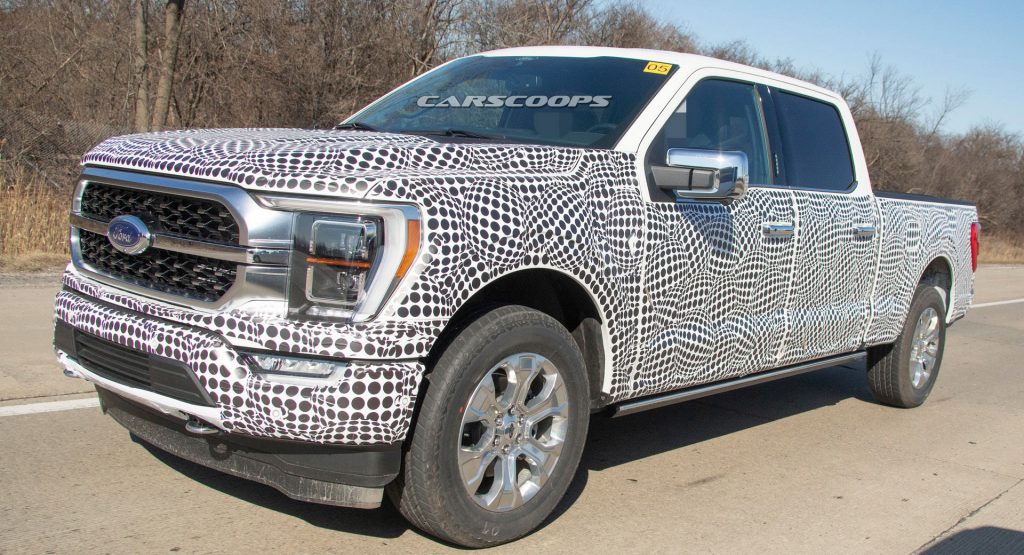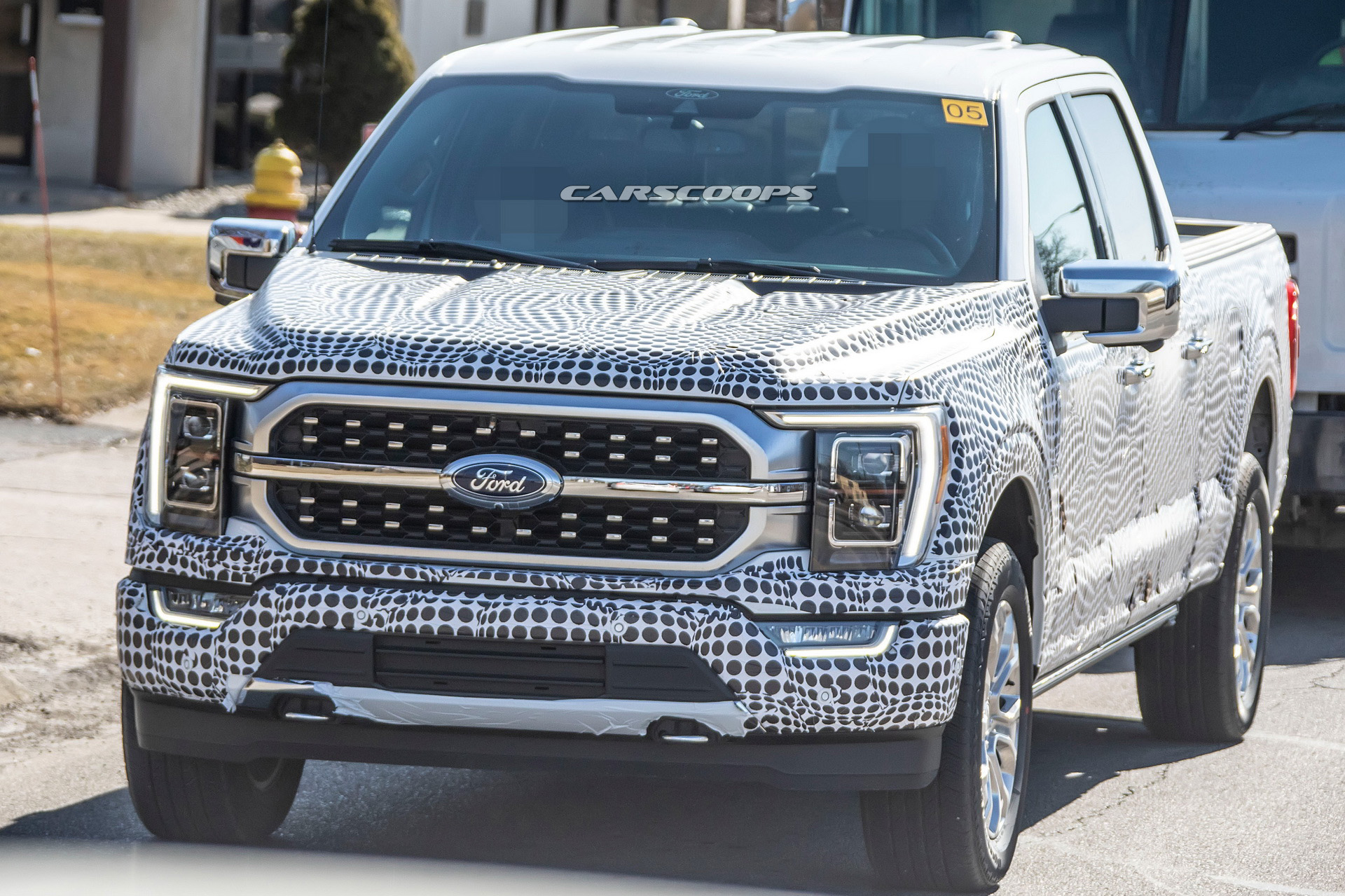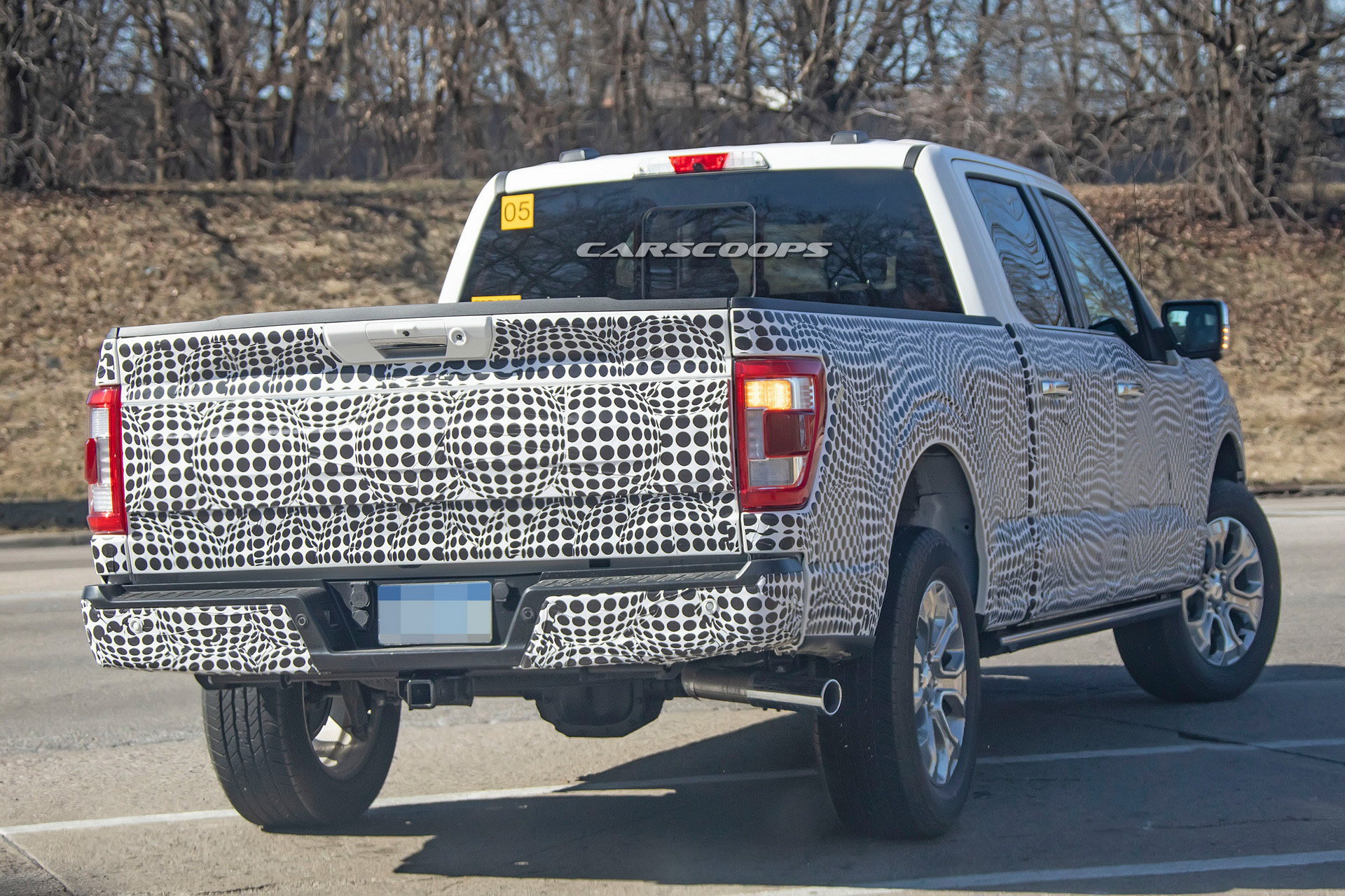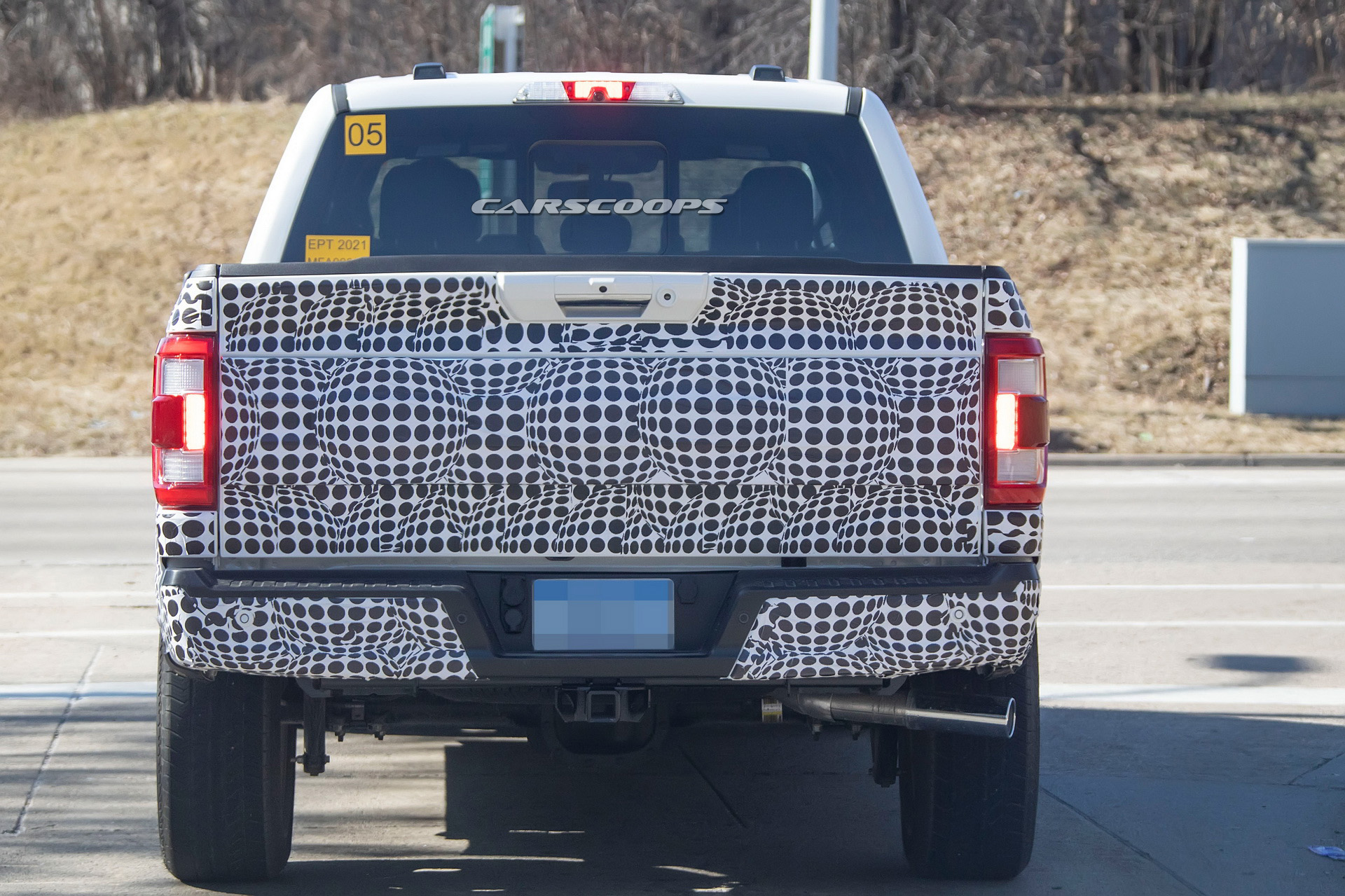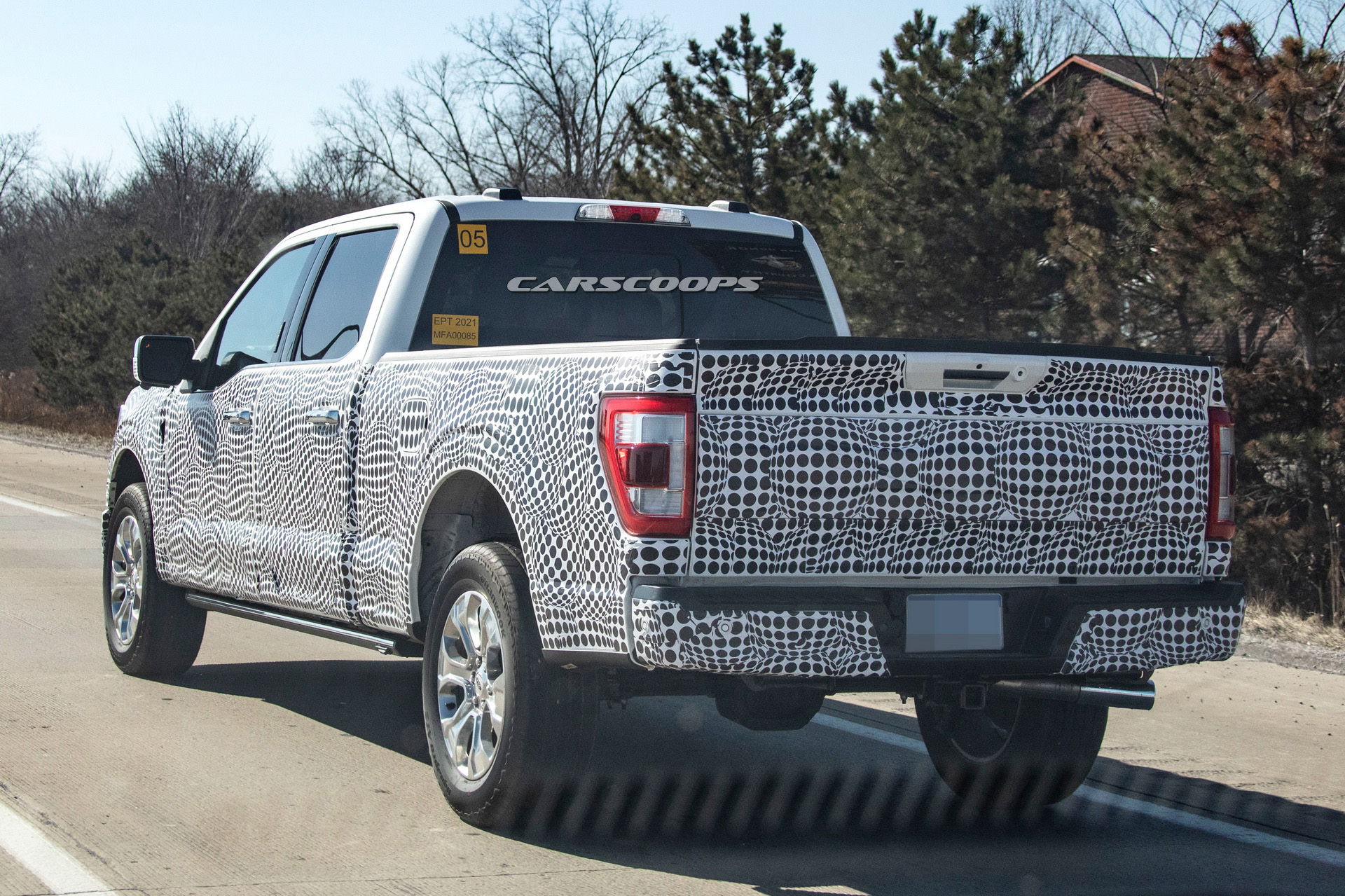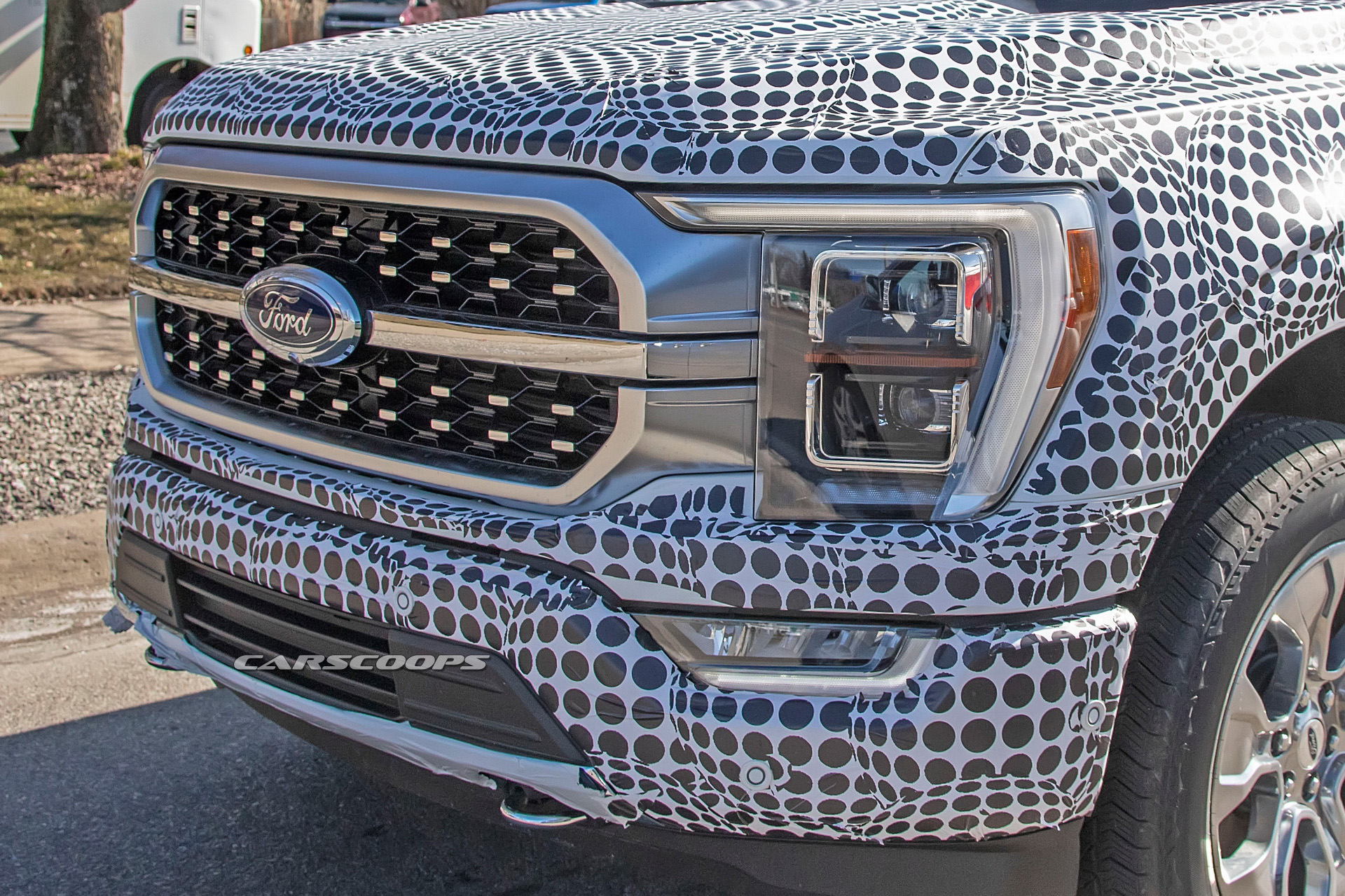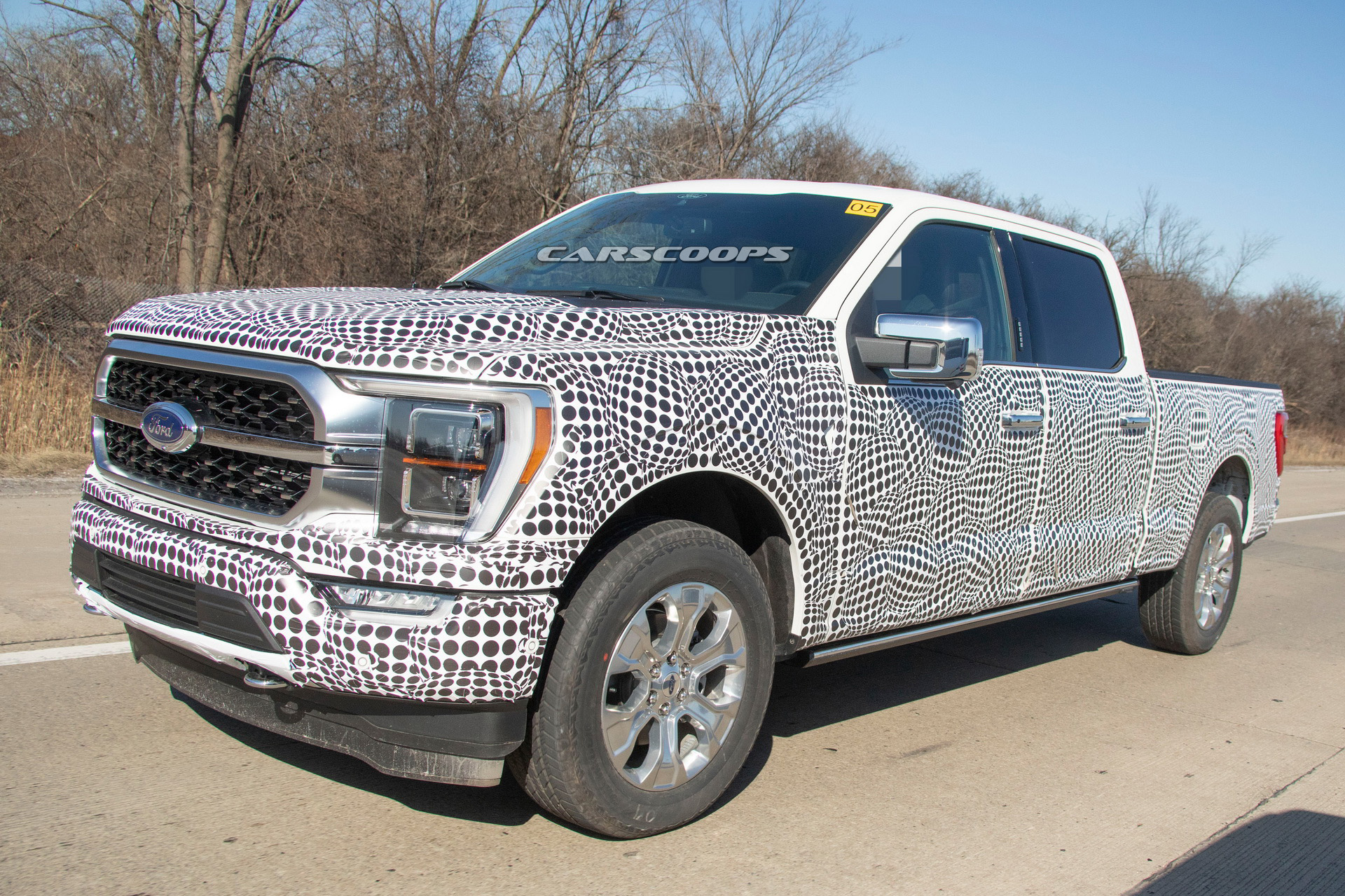Ford is putting the finishing touches on the redesigned F-150 and a new document may have revealed its engine lineup.
Posted on the NewF150Forum, the VIN decoder suggests the truck will be offered with six different engines.
Unsurprisingly, many of them carryover from the current model. The lineup starts with a 3.3-liter V6 that produces 290 hp (216 kW / 294 PS). Customers can also opt for a slightly more powerful 2.7-liter EcoBoost V6 with 325 hp (242 KW / 330 PS).
Also Read: 2021 Ford F-150 Shows Off New Front And Rear End Design
Speaking of EcoBoost engines, the 3.5-liter V6 returns to the lineup and continues to produce 375 hp (280 kW / 380 PS). While the F-150 Raptor is referenced in the document, it’s high-output 3.5-liter V6 is curiously missing from the list. However, in the current model, it’s rated at 450 hp (336 kW / 456 PS) and 510 lb-ft (691 Nm) of torque.
Ford’s familiar 5.0-liter V8 engine is also set to make an appearance and it will once again have 395 hp (295 kW / 400 PS).
Interestingly, the 3.0-liter PowerStroke V6 diesel engine has a to-be-determined output. The current engine is rated at 250 hp (186 kW / 253 PS) and 440 lb-ft (596 Nm) of torque, so it’s odd the output isn’t listed.
However, it could mean Ford is planning to upgrade the diesel to make it more competitive. That remains unconfirmed, but Ford’s diesel is down on power as the Ram EcoDiesel has a 3.0-liter V6 that produces 260 hp (194 kW / 264 PS) and 480 lb-ft (651 Nm) of torque. The diesel-powered Chevrolet Silverado and GMC Sierra are also more powerful as they have a 3.0-liter inline-six with 277 hp (207 kW / 281 PS) and 460 lb-ft (623 Nm) of torque.
Of course, the big news is the F-150 Hybrid which is slated to use a 3.5-liter V6 engine. Ford hasn’t said much about this particular variant, but they have previously confirmed the model will go into production in 2020 and have the ability to operate as a mobile generator for powering tools and equipment. The company has also said the model will maximize its hybrid system to deliver more “low-end torque for extra pulling power.”




